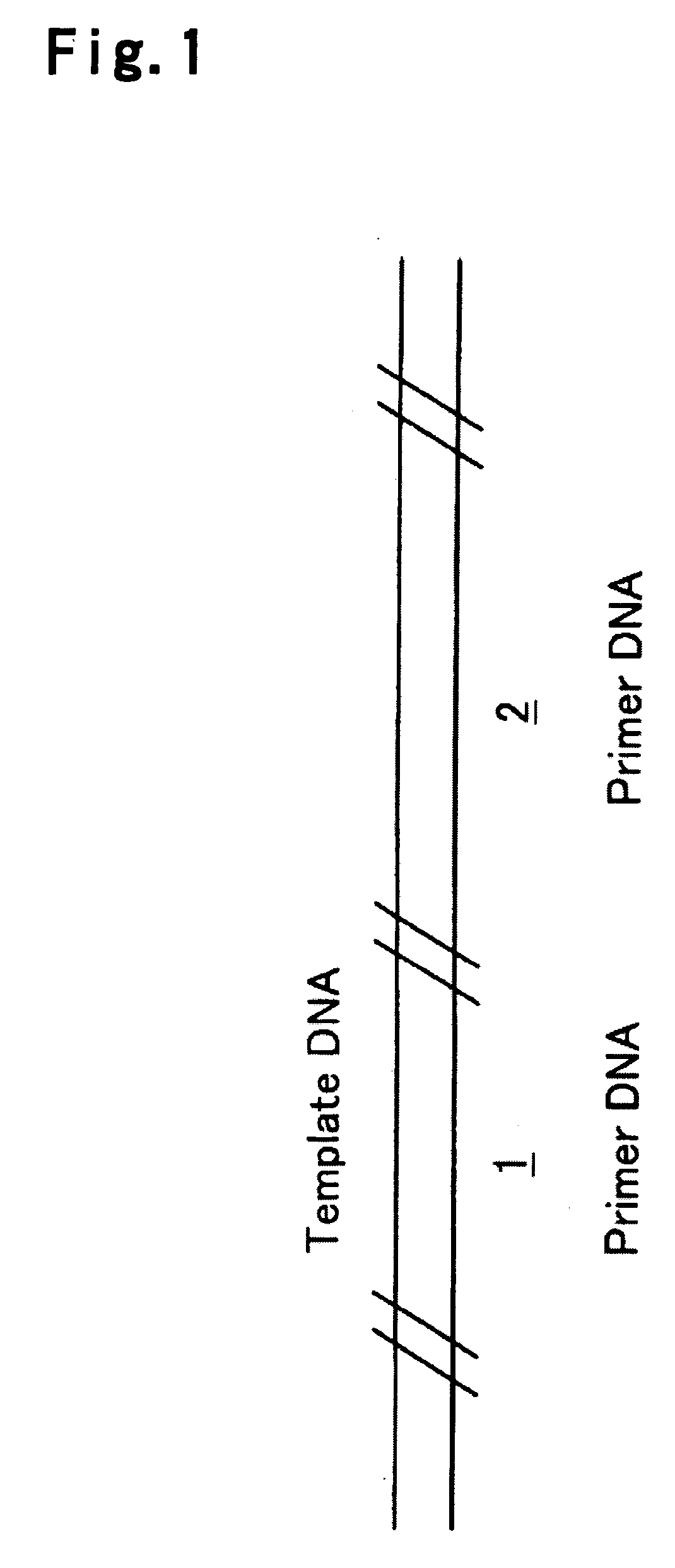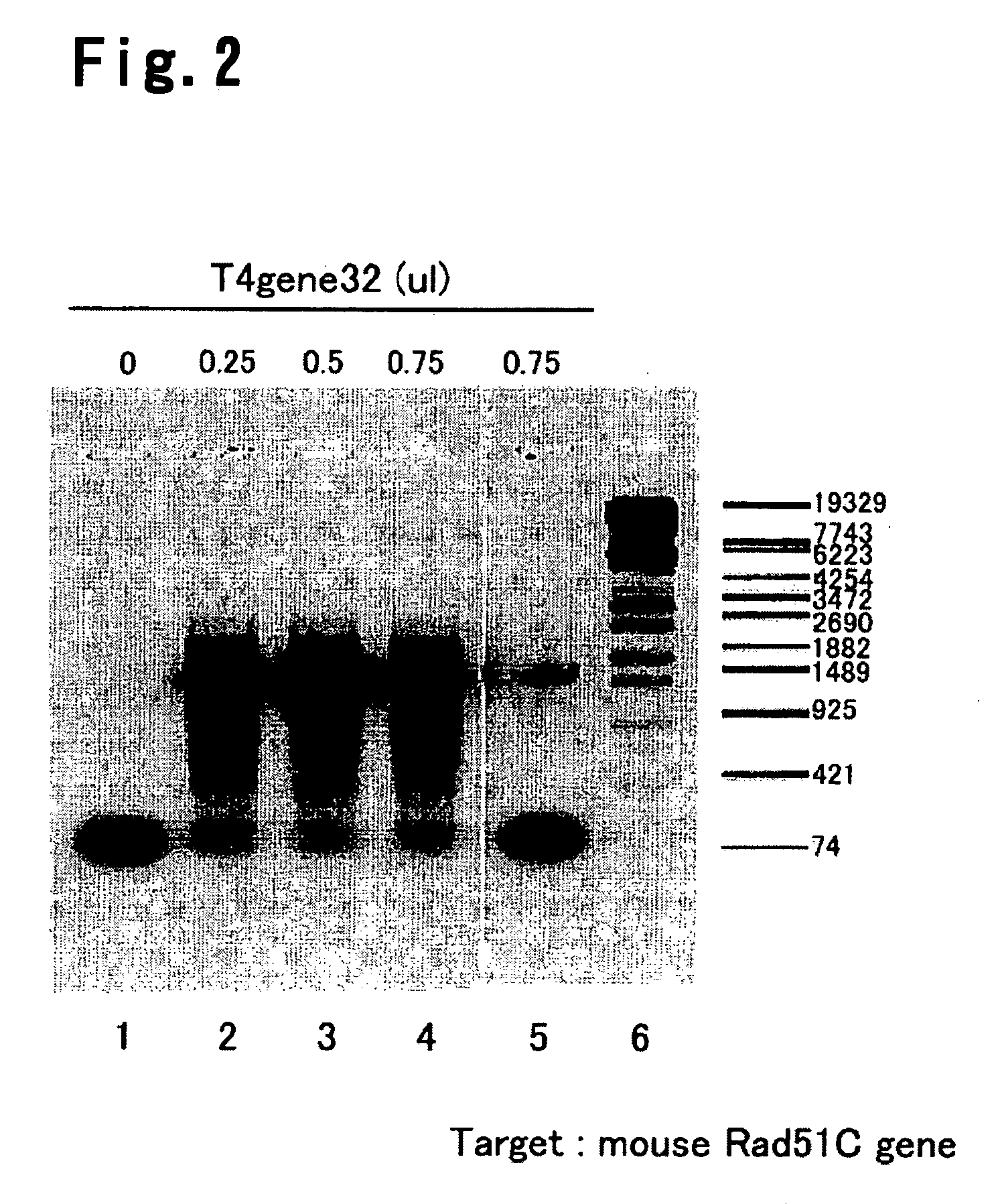Nucleic acid amplification method
a nucleic acid and amplification method technology, applied in the field of nucleic acid amplification methods and reagent kits for amplifying nucleic acids, can solve the problems of insufficient amplification of desired nucleic acids (specific pcr products), and achieve the effect of amplification of desired nucleic acids, low complementarity of primer dna, and improved specificity of pcr reactions
- Summary
- Abstract
- Description
- Claims
- Application Information
AI Technical Summary
Benefits of technology
Problems solved by technology
Method used
Image
Examples
Embodiment Construction
[0043] Examples of the present invention will be further illustrated below with reference to Drawings.
[0044] A mouse genome DNA (Promega) was prepared as a template DNA as shown in FIG. 1. A set (2 kinds) of oligonucleotides (Oligonucleotide 1 and Oligonucleotide 2) were prepared as a primer DNA. Primer DNA 1 (Oligonucleotide 1) was designed with reference to the mouse DNA sequence from clone RP23-253K17 on chromosome 2, complete sequence (ACCESSION AL929018). Primer DNA 2 (Oligonucleotide 2) was designed with reference to the mouse DNA sequence from clone RP23-459P8 on chromosome 11, complete sequence (ACCESSION AL669902). The ACCESSION number indicates an access number of Gene Bank. Each primer DNA consists of a base sequence which is 100% complementary to the template DNA. Each primer DNA may be synthesized by a known method on the basis of the base sequence of the template DNA.
Oligonucleotide 1:5′-gtgggttttcctctgtctcc-3′Oligonucleotide 2:5′-gaaggtgattatgaagccctgg-3′
[0045] In ...
PUM
| Property | Measurement | Unit |
|---|---|---|
| temperature | aaaaa | aaaaa |
| time | aaaaa | aaaaa |
| chain length | aaaaa | aaaaa |
Abstract
Description
Claims
Application Information
 Login to View More
Login to View More - R&D
- Intellectual Property
- Life Sciences
- Materials
- Tech Scout
- Unparalleled Data Quality
- Higher Quality Content
- 60% Fewer Hallucinations
Browse by: Latest US Patents, China's latest patents, Technical Efficacy Thesaurus, Application Domain, Technology Topic, Popular Technical Reports.
© 2025 PatSnap. All rights reserved.Legal|Privacy policy|Modern Slavery Act Transparency Statement|Sitemap|About US| Contact US: help@patsnap.com


